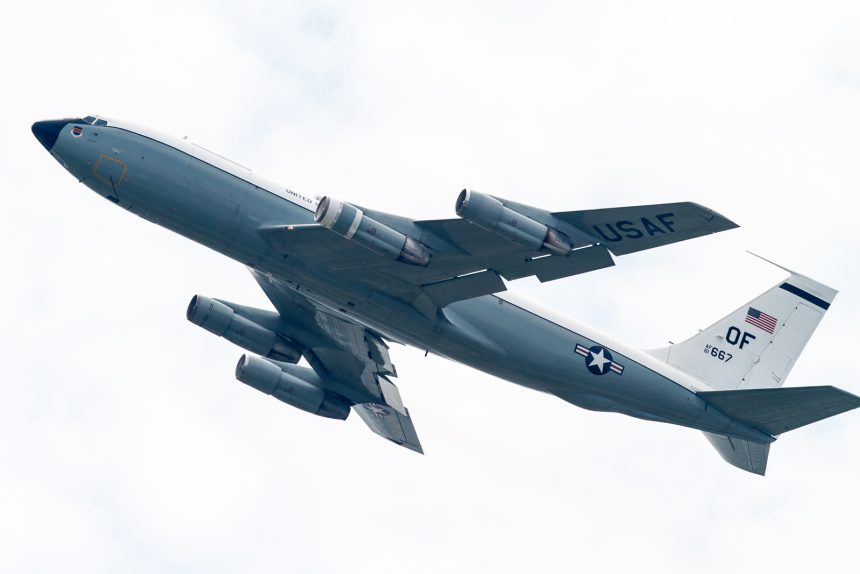The WC-135C “nuke hunter” has deployed to Okinawa amid raising nuclear tensions with Pyongyang.
The U.S. Air Force WC-135C Constant Phoenix Nuclear explosion “sniffer” has arrived in Japan.
The aircraft was deployed to Kadena Air Base, Okinawa, to monitor Kim Jong Un nuke tests, the Nikkei media outlet reported based on talks with a senior Japan Self Defense Forces official.
The aircraft was supposed to arrive at its Forward Operating Base last month but it was forced to perform an emergency landing at Sultan Iskandar Muda airport in Banda Aceh, Indonesia, on its way to Japan, on Mar. 24, following an engine failure.
The two WC-135 Constant Phoenix aircraft in service today (out of 10 examples operated since the 1960s) are Boeing C-135 transport and support planes derivative belonging to the 45th Reconnaissance Squadron from Offutt Air Force Base, with mission crews staffed by Detachment 1 from the Air Force Technical Applications Center.
The Constant Phoneix, known as the “sniffer” or “weather bird” by its crews, can carry up to 33 personnel.
Constant Phoenix flies in direct support of the U.S. Atomic Energy Detection System, a global network of nuclear detection sensors that monitor underground, underwater, space-based or atmospheric events. As the sole agency in the Department of Defense tasked with this mission, AFTAC’s role in nuclear event detection is critical to senior decision makers in the U.S. government, says the Air Force.
“Our aircraft is equipped with external flow devices that allow us to collect airborne particulate on filter paper and a compressor system for whole air samples,” said Tech. Sgt. Matthew Wilkens, a 9S100 and airborne operations section chief in a recent release. “The particulate samples are collected using a device that works like an old Wurlitzer jukebox. An arm grabs the paper from its slot and moves it to the exterior of the fuselage. After exposure, it is returned to the filter magazine where a new paper is selected for use. It’s a simple, yet very effective, concept.”
Effluent gasses are gathered by two scoops on the sides of the fuselage, which in turn trap fallout particles on filters. The mission crews have the ability to analyze the fallout residue in real-time, helping to confirm the presence of nuclear fallout and possibly determine the characteristics of the warhead involved.
This is not the first time the aircraft is moved close to the Korean peninsula in anticipation of Kim Jong Un rocket launches; moreover, the WC-135 has already been deployed to Japan back in 2011, when it was used to track radioactive activity around Fukushima following, a type of mission the aircraft had already flown in 1986 following the Chernobyl nuclear plant disaster in the Soviet Union.
The aircraft 62-3582 has recently completed a “tour” in Europe, arriving on Feb. 17, 2017 and conducting several missions both in the Barents Sea area and in the Mediterranean Sea until mid March. The pretty rare deployment to RAF Mildenhall, UK, amid raising concern for an alleged spike in Iodine levels around Norway, fueled speculations that the U.S. had sent the detection aircraft to investigate the reasons behind the radioactive levels detected in northern Europe at the beginning of January.
However, the “nuke hunter” plane was on a “pre-planned rotational deployment scheduled in advance,” according to the Air Force spokeswoman Erika Yepsen.
This time, with a U.S. aircraft carrier strike group heading to the Korean Peninsula, there is no doubt as to the aim of the deployment of the “sniffer” to Japan.
Image credit: Ken H / @chippyho via Wiki Commons









